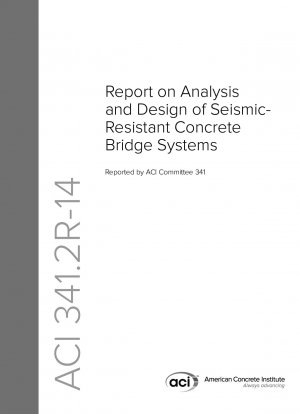ACI 341.2R-2014
Report on Analysis and Design of Seismic-Resistant Concrete Bridge Systems
- Standard No.
- ACI 341.2R-2014
- Release Date
- 2014
- Published By
- ACI - American Concrete Institute
- Latest
- ACI 341.2R-2014
- Scope
- General The stated objectives of seismic design provisions in major codes have evolved considerably over the last 20 years. The initial focus of preventing structural collapse under the design earthquake to prevent loss of life has shifted to broader design objectives@ such as achieving a level of serviceability following a major earthquake that allows for emergency response and ensures that transportation lifelines remain operational. These newer design objectives focus on the need for structures to remain operational after an earthquake@ particularly for structures important to emergency response and those housing emergency and high-risk facilities. Critical structures include bridges on key response routes@ hospitals@ public safety headquarters@ communication centers@ and nuclear power stations. Bridge seismic design philosophies may use a traditional single seismic design level (AASHTO 2012; AASHTO LRFDSEIS-2-M) or a two-level approach (MCEER-ATC-49) where both functional-level and safety-level hazards are considered. Performance objectives for each level are composed of a performance level or functional requirement at a seismic hazard level. The functional-level event considered in this two-level approach is typically a lower-level event with relatively high probability of exceedance (PE)@ and the safety-level event is typically a major seismic event with a very low PE. The typical performance objectives for the twolevel approach tolerate only slight damage to ensure uninterrupted service of the bridge under the lower-level event@ and allow only easily repairable damage under the higher-level event to ensure minimal or no disruption of lifelines. In setting minimum performance standards@ design codes recognize that it is not practical to design a structure to resist a large earthquake elastically; therefore@ some degree of damage is typically permitted under the higher-level event. For critical structures@ however@ depending on expectations of how quickly the particular structure can be put back in service and repaired@ the damage can be further restricted by tighter requirements defined by the owner. Design performance level requirements have become more general and are not always tied to traditional notions of force and strength. Thus@ analysis requirements have also evolved beyond the traditional methods involving equivalent static forces representing the design event. The extent of damage in different bridge components is commonly quantified using performance quantities such as strains@ curvatures@ and displacements. Limiting damage requires imposing appropriate limits on these parameters in the critical sections of the structural members. In addition@ the response of the structural system should be evaluated as a whole to assess functionality and operability. This requires a higher level of sophistication in both system modeling as well as sectional and material-level analysis. Reinforced concrete structural members@ in particular@ require greater attention to detail when moving beyond elastic or equivalent elastic analysis because of the interaction of concrete and reinforcing bar@ nonhomogeneity of the concrete material@ and the progression of cracking and yielding of the section with increasing strains. For example@ a pushover analysis accounting for the pier or bent moment-curvature relationships at different axial loads is commonly used to develop a better understanding of the nonlinear behavior of the structure and the type of damage that might be expected. For bridge structures@ damage permitted under the design seismic event is limited primarily to elements with ductile capacity that can experience dependable flexural inelastic response such as the columns or pier walls. In addition@ nominal damage may be tolerated in other parts of the bridge such as at the abutment@ shear keys@ and in-span hinges or expansion joints. These bridge elements are easy to inspect and repair@ should damage be sustained during a seismic event. The use of a capacity design approach is also intended to prevent damage to elements@ such as foundation piling@ that are difficult to inspect and repair following a seismic event. Acceptable damage depends on the parameters discussed previously and the expectations of the bridge owners and stakeholders; however@ in all cases@ loss of girder support@ column failure@ foundation failure@ and connection failure are unacceptable. Performance-driven design requirements@ especially for structures in areas of high seismicity@ make the modeling of the bridge structural system very important. The bridge structural system being modeled should not only include the columns@ but also the abutment and foundation systems. Modeling should account for interaction between these different components (for example@ superstructure impact on abutment gap closure) as well as with the surrounding soil (for example@ transmission of base rock motion to the foundation elements through the surrounding soil). Although the discussions presented herein are in principle applicable to all bridges@ the intent is to address short- and medium-span bridges with span lengths less than 500 ft (150 m). Long-span and specialty bridges involving additional design considerations are outside the scope of this document. The information presented in this document has largely been extracted from design specifications@ codes@ and other references. This document should be considered as a guide to be used by a responsible design professional with the proper background and in conjunction with experience and judgment of the designer.
ACI 341.2R-2014 history
- 2014 ACI 341.2R-2014 Report on Analysis and Design of Seismic-Resistant Concrete Bridge Systems
- 1997 ACI 341.2R-1997 Seismic Analysis and Design of Concrete Bridge Systems
